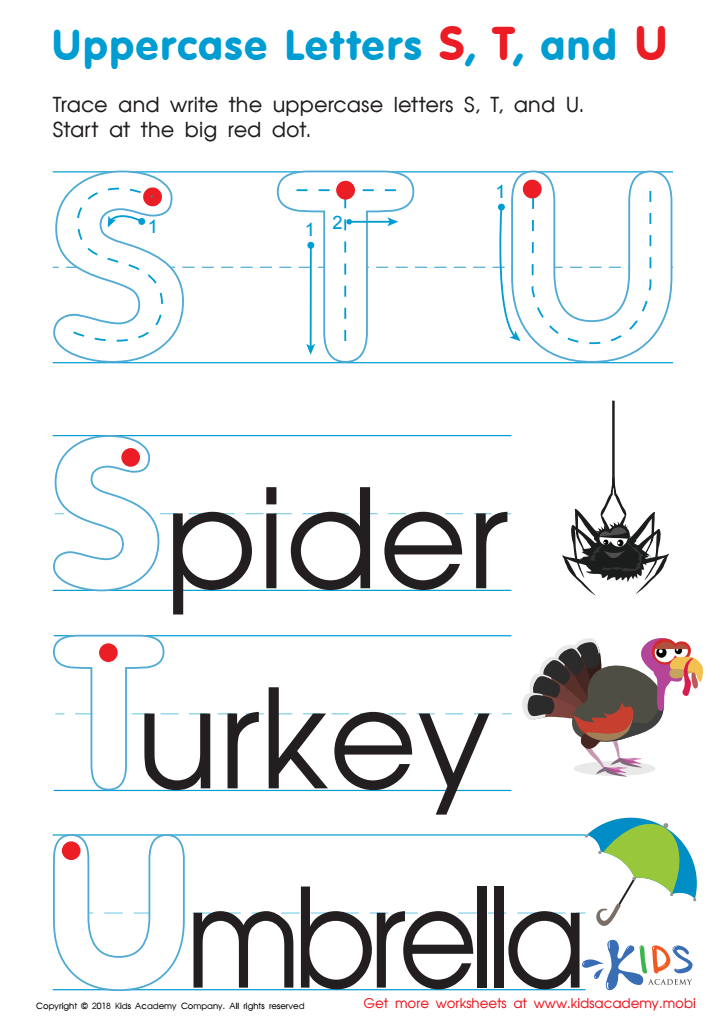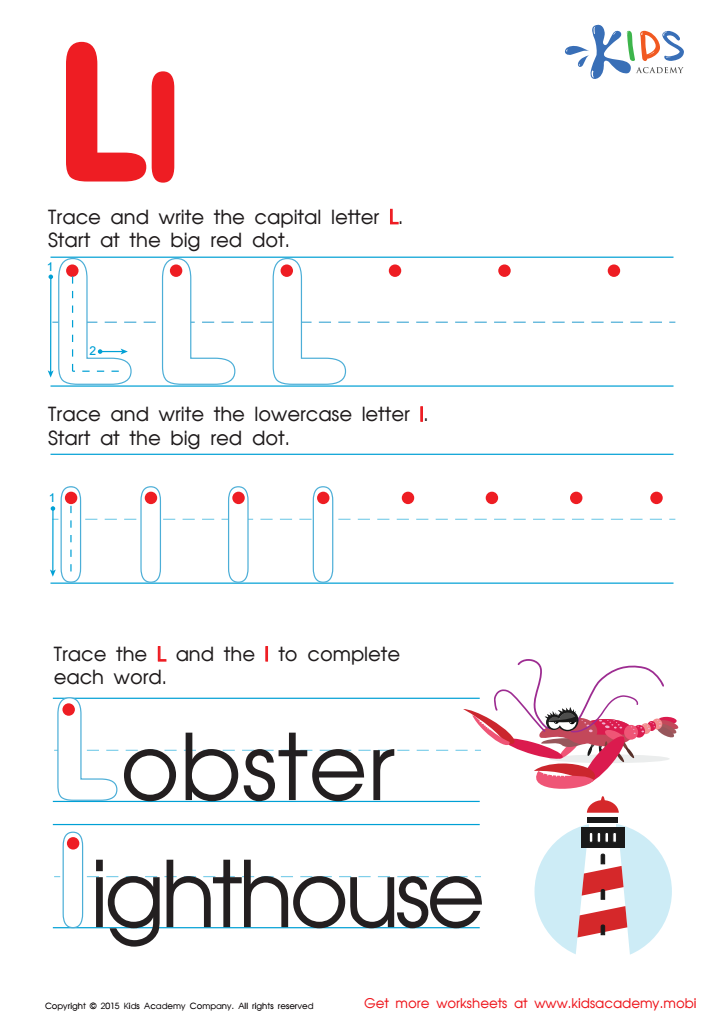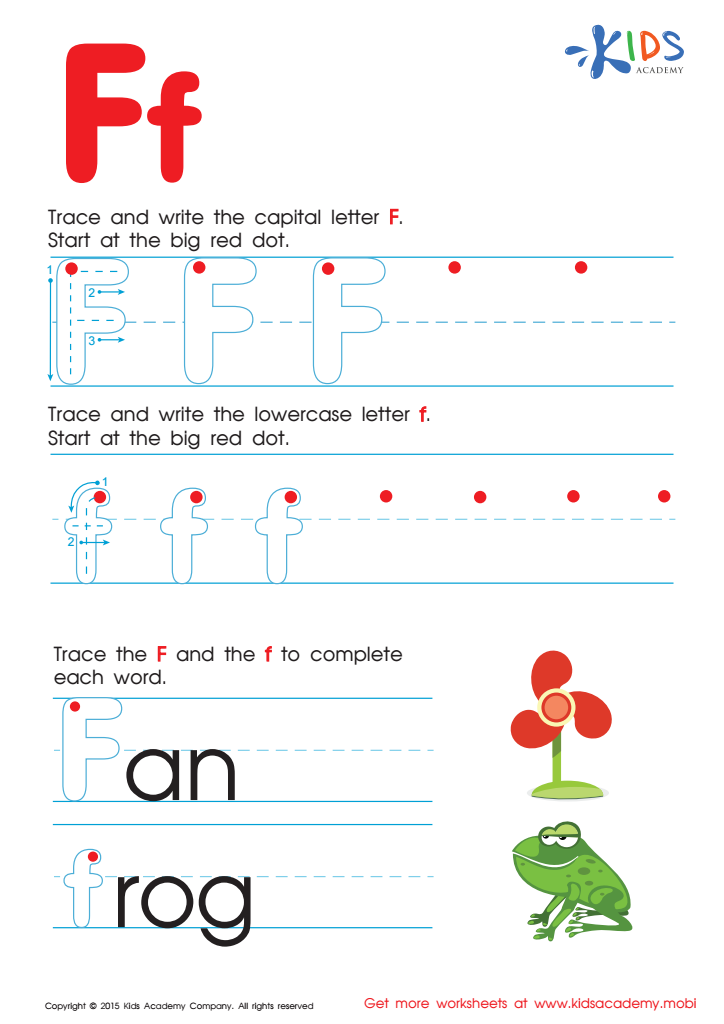Alphabet Learning Normal Letter Recognition Worksheets for Ages 3-4
3 filtered results
-
From - To
Introduce your little ones to the fascinating world of letters with our Alphabet Learning Normal Letter Recognition Worksheets designed for ages 3-4. Each engaging worksheet helps young learners identify, recognize, and differentiate between upper and lowercase letters. Fun activities encourage children to explore the alphabet through coloring, tracing, and matching exercises, enhancing their fine motor skills and laying a strong foundation for early literacy. Perfect for home or classroom use, these worksheets make learning fun and interactive, sparking a lifelong love for reading and writing. Explore our collection today and watch your child’s confidence grow!


Uppercase Letters S, T, and U Worksheet


Letter L Tracing Page


Letter F Tracing Page
Alphabet learning and normal letter recognition for ages 3-4 serve as foundational stones for a child's literacy development. At this formative age, children's brains are highly malleable and incredibly receptive to new information. Encouraging letter recognition early helps strengthen neural pathways associated with language and cognitive abilities. This early introduction sets the stage for successful reading and writing skills later on.
When parents or teachers focus on helping children recognize letters and their sounds, they also boost the children's phonemic awareness—the ability to hear and manipulate the individual sounds in words. Phonemic awareness is critical for decoding words, a process essential for fluent reading. Furthermore, as children become familiar with the alphabet, they begin to understand that written text carries meaning, which drives their interest toward books and stories, fostering a lifelong love for reading.
Moreover, early alphabet learning builds a child’s confidence and eagerness to learn more. Parents and teachers can use play-based and engaging methods to teach letters, making learning enjoyable and stress-free. Simple tools like alphabet puzzles, flashcards, songs, and interactive apps transform what could be a daunting task into a delightful adventure.
Overall, early alphabet learning equips children with the tools needed for academic success, benefiting their linguistic, cognitive, and social capabilities. Therefore, parents and teachers should prioritize this crucial educational milestone.
 Assign to My Students
Assign to My Students
















